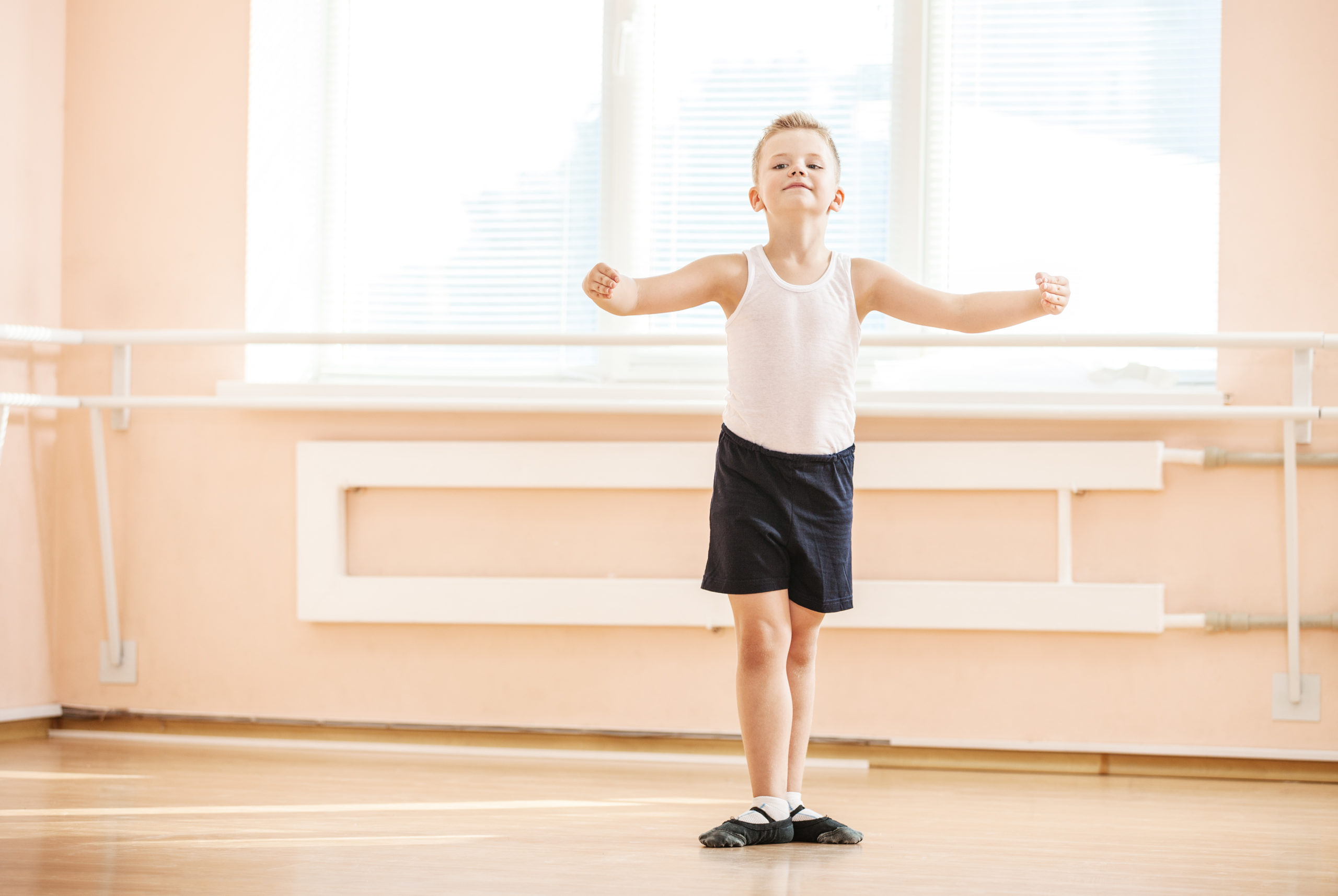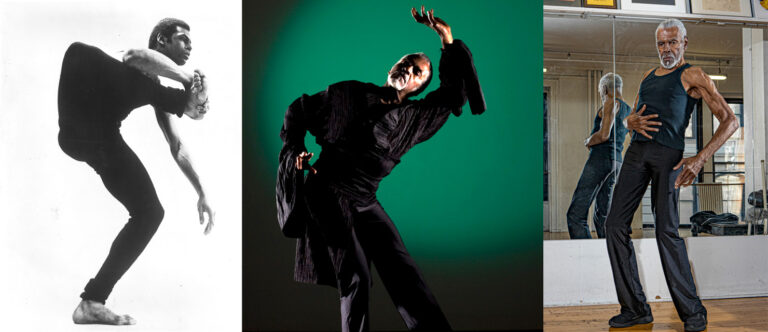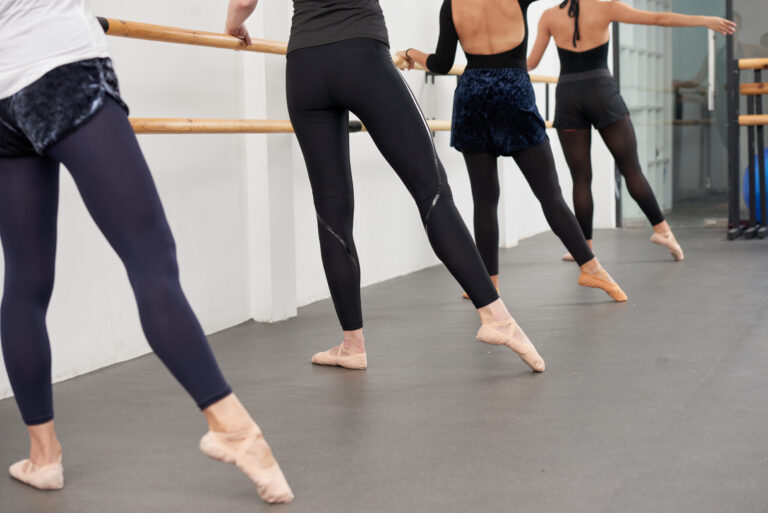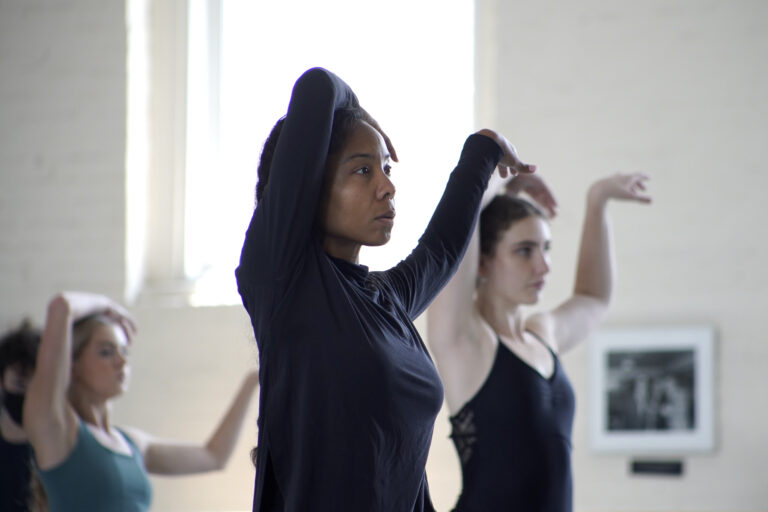
When a young male dancer hits puberty, you’ll know the signs: “One day they look normal, the next they look like a string bean. They can get a little wonky for a while,” says Jim Lane, managing director for The Portland Ballet, a youth academy and company. “You’ll notice turns get out of whack, or they’ll trip doing an easy combination across the floor.”
Most boys begin puberty around age 11 or 12 and complete the process by 16 or 17. It is a physically awkward time; growth spurts can leave boys gawkily tall and unsure where their extremities end. This is especially tough on male dancers, who can temporarily lose their grace and coordination, as well as some flexibility. As their dance teacher, you can help them continue to train successfully, even as their bodies change.
Puberty marks an essential training period for males, says Ballet San Jose school director Dalia Rawson, because they begin developing their adult musculature and the necessary strength to hoist dance partners overhead. It’s especially important for them to develop stabilizing muscles in the shoulders, back and arms.
They also need to maintain flexibility. “I encourage students to be conservative but consistent in their stretching during and immediately after a growth spurt,” says Rawson. “It’s important not to overtax the muscles and tendons while they are catching up to bone growth.”
The Portland Ballet teaches the following body-weight-based workout to its boys around 11 or 12, to complete outside the studio on their own time. Rawson recommends similar body-weight exercises at Ballet San Jose, because they engage numerous joints and muscles at the same time, while challenging balance.
(Do exercises in one-minute intervals in a single circuit, three days a week.)
1. Sliding Forearm Presses: For chest, shoulders and core
Press palms and forearms together in front of your face, with elbows as close together as possible without collapsing the ribcage or rounding the shoulders. With resistance, move arms up and down about four inches.
2. Triceps Kickbacks: For arms, especially triceps
With feet hip-width-distance apart, bend your knees and lean forward slightly from the waist, keeping your back straight. Bend your elbows 90 degrees and pull them behind you, keeping arms close to your sides. With your hands in fists, slowly extend both arms backward until they are straight and slowly return, flexing the biceps once they are back at the starting position.
3. Chest Presses: For chest, shoulders and arms
Lift your arms to second position and bend elbows up at 90-degree angles. Hands are in fists, pointing toward the ceiling. With resistance, move your arms to the front of the body, maintaining the “L” shapes, and return to the original position.
(Prepare for all standing exercises with feet under the hips and core engaged.)
4. Arm Circles: For chest, arms and shoulders
Extend your arms straight out from your shoulders to the sides. Draw small, controlled circles, 30 seconds in each direction.
5. Rhomboid Pulls: For shoulders
With arms at your sides, pull the shoulder blades in toward each other and squeeze, hold and release. Make sure you do not arch your back. Visualize squeezing a tennis ball between the blades; this is purely a shoulder blade isolation exercise.
6. Prone Triceps Push-ups: For arms, core and chest
Lying on the stomach and with the hands underneath the shoulders, engage the core and push up into a plank position. (If needed, start the exercise on the knees before moving to the toes.) Keep the elbows tucked into the sides of the body, and lower to about two inches above the floor before pushing back up to the plank.
Once you are strong enough to do at least one slow, full triceps push-up, move into the traditional push-up stance, with arms farther from the body and elbows pointing out for more emphasis on the chest. Or, place the hands in a diamond shape under the chest for additional emphasis on the triceps.
7. Wall Push-ups: For arms, core and chest
Lean against the wall in a traditional push-up position, about an arm’s length away, and complete 30 seconds of slow wall push-ups. Add 30 seconds of pulses. Once you can do both the slow reps and pulses, you can move the exercise to the barre (if it is attached to the wall) for a steeper incline, and then to the floor. This progression is designed for students who haven’t yet built the upper-body strength to start from the traditional floor position.
Dance Belts and Body Odor
Growth spurts aren’t the only awkward part of puberty for male dancers. Talking about the need for a dance belt and how to control body odor is also important. But it can be embarrassing—for instructors as well as dancers. Here’s how to make those conversations a little easier.
- Include these personal topics in your studio handbook. Require dance belts to be part of the school uniform for boys ages 12 and older, and consider making deodorant and clean dance clothes mandatory for all students.
- During the first week of classes, reinforce the importance of proper attire, including undergarments. “You can address the topic with the entire class when you talk about expectations for the dress code and other school rules,” says Jason Davis, men’s instructor for The Portland Ballet.
- If a student fails to wear a dance belt when he needs it, pull him aside to have a short, matter-of-fact conversation. “Choose your words carefully, but you can let them know they need to properly hold their stuff together for their own safety,” Davis says, adding that he has his male students wear a dance belt or trunks as early as possible, even as young as 8, so it’s not a big deal when they actually need the support.
- For students (and parents) who are new to dance and don’t know what a dance belt is or where to buy one, Davis shows them a dance supply catalog and explains it’s just like a jockstrap, but instead of two straps in the back, there is one up the middle.
- Female teachers can have these chats, too, says Dalia Rawson, director of Ballet San Jose School. “Be open about it, because there is nothing mysterious or strange,” she says. “Telling a young man succinctly that he needs to wear a dance belt and to be sure to always wear clean dance clothes, as well as deodorant and antiperspirant, tends to go more smoothly when a teacher delivers this message as part of a friendly conversation. The boys tend to nod, say ‘OK’ and do it.”



